LIGHTROOM
For iOS and Android

PHOTOGRAPHY
Make an impression with sepia photography.
Explore the history of sepia images and learn how to recreate the same warm, dreamy effect with your own digital photos.
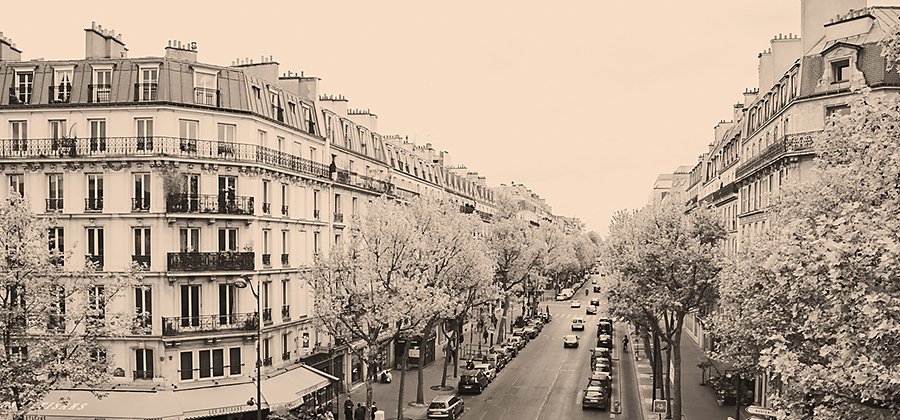
Not sure which apps are best for you?
Not sure which apps are best for you?
Take a minute. We'll help you to figure it out.
Take a minute. We'll help you to figure it out.
Go monochrome with sepia.
From old historic photos in an antique shop to art prints in a museum, sepia photography is instantly recognisable. “Sepia photography is similar to black-and-white photography in that it’s monochromatic, meaning one tone or one colour. But it’s more brown or str,” says photographer Ellen Fisch.
While traditional black-and-white photographs use a standard grayscale to create highlights and shadows, sepia-toned photos use a reddish-brown tone to create that spectrum. “Sepia is a softer manipulation of light,” adds Fisch. This gives them a softer, dreamier aesthetic.
Origins in the darkroom.
Sepia toning started with analogue film photography and is used in a darkroom during the photo printing process. Technically speaking, sepia toning is a chemical process that converts the metallic silver in the emulsion of a photographic print into a silver sulphide compound. This changes the colour of the resulting image and makes the photo more resistant to environmental pollutants. This helps photos hold up over time.
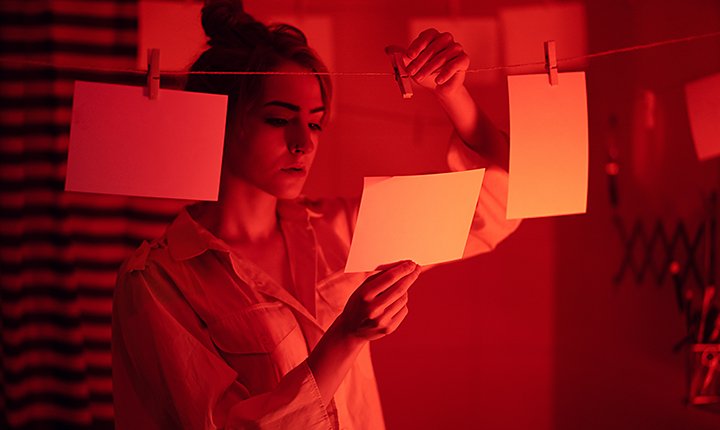
The sepia toning darkroom process can’t be completed with colour photos. While some artists continue this process today, it’s costly and requires specific chemicals and equipment to get right. “The darkroom is a more traditional way to do it. And some people just really like it — that feeling of actually being in a darkroom and playing with the chemicals and liquids,” says photographer Gregory Ballos. While developing and printing photos physically can help an artist connect with their vision and convey an idea, you can easily recreate the sepia effect with digital photography tools.
Get artistic with sepia pigments.
Since sepia toning was used to help old photo prints hold up over time, many surviving historic images are sepia photos. This means the sepia tone is now associated with antique imagery. So if you create a modern, digital image with a sepia effect, it can take on an element of nostalgia or history. Artists can use this technique to evoke memories or create a feeling of nostalgia for their viewer.
The sepia pigment itself is a warm, comforting colour and the edges in sepia photos are soft. Even a harsh architectural photo with dramatic lines and shadows can take on a warm, soft appearance with a sepia photo effect.
“I find sepia works really well with landscape photography. Sometimes a colour rendering is really pretty, but that vintage sepia element gives it a whole different feel. It has a more classic look than what you get when working with full colour,” says Ballos. From portraits to nature shots, sepia photography can help an artist approach their subject matter in an unexpected way.
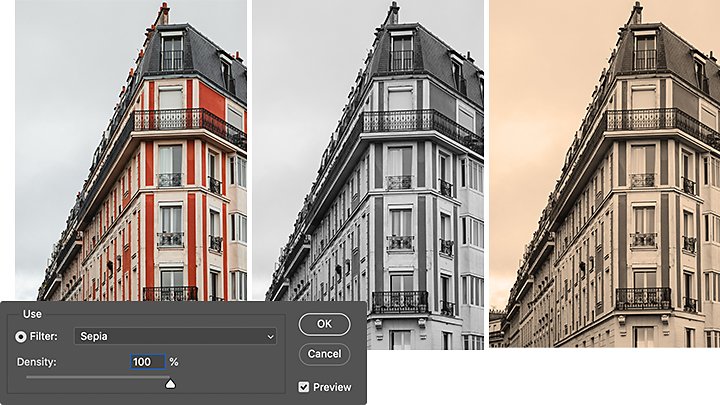
How to create digital sepia photos.
With photo editing software like Adobe Photoshop, you don’t need a darkroom to create a warm and inviting sepia effect. In fact, it’s incredibly easy to apply a sepia filter to any image, including full-colour images, during post-processing. Just click Image › Adjustments › Photo Filter and then select the Sepia option. From there, you can use the slider to edit the adjustment layer and decide how dramatic you want the sepia effect to be.
You can achieve a more authentic vintage aesthetic by transforming your colour photo into a black-and-white image before you add the sepia effect. To make your image black and white, click Image › Adjustments › Black & White. From there you can adjust the highlights, lowlights and colour slides. After you have your grayscale image, apply the sepia photo effect to give your image that soft, warm feeling.
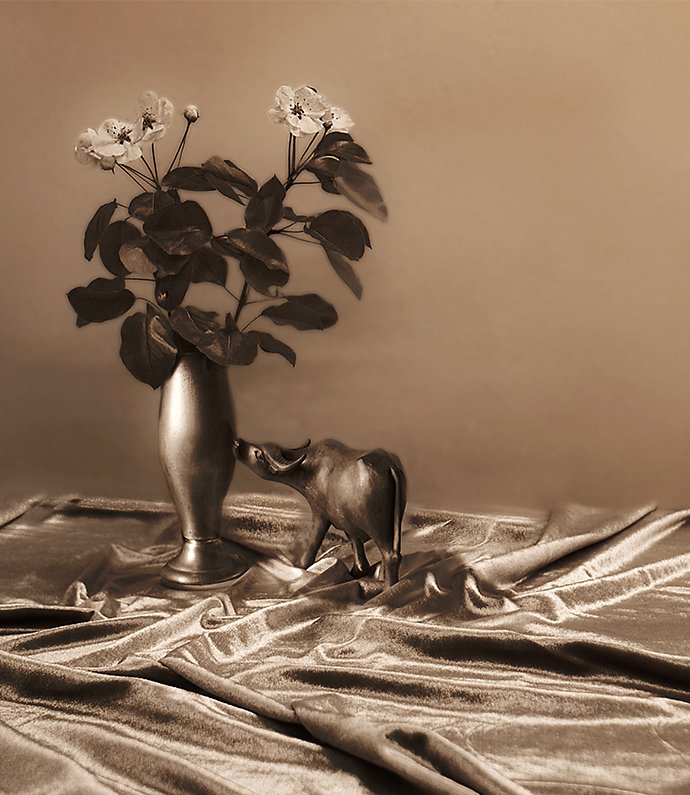
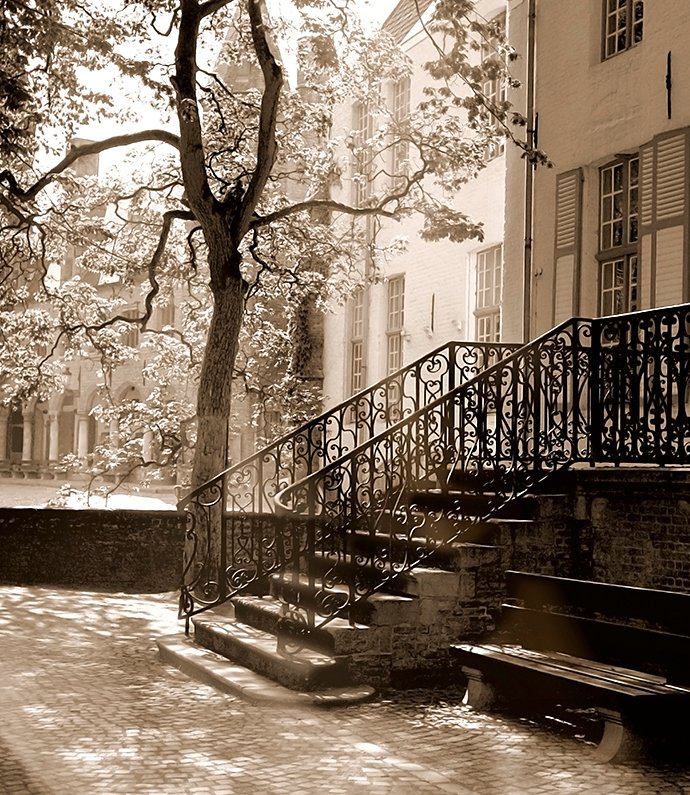
Images by Ellen Fisch
Tips for shooting better sepia photos.
Focus on your light.
Like any monochrome image, a sepia photo needs strong highlights and shadows. “You can’t take a bad picture and turn it into a great picture if it doesn’t have good light. That’s what photography is, it’s writing or painting with light. So I always tell people to just get out there and play around with light at different times of the day,” says Ballos. Try experimenting with natural light, portrait lighting and studio lights to find what works best for your sepia images.
Consider the composition.
“While the most important thing about art is light — because it creates line, form and composition — the second most important thing about art is what you leave out,” says Fisch. Composition is hugely important for sepia photos. Without the full range of colour to play with, the lines and shapes and their arrangement in the frame can make or break a photo. Explore different composition styles, like the rule of thirds or leading lines, to find out what works best for your creative vision.
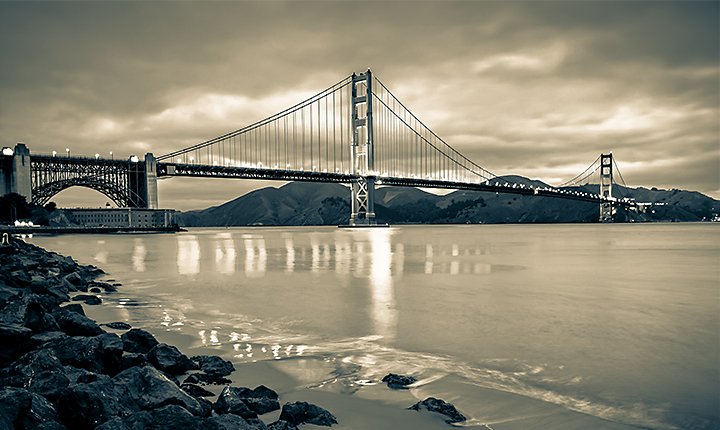
Image by Gregory Ballos
Experiment with camera settings.
With sepia tints, photos automatically take on a mellow, surreal edge. You can highlight this effect by using a shallow depth of field or you can contradict the gentle sepia vignette by shooting everything in crisp focus with a wide depth of field. Just keep in mind that your camera settings make a big difference in the resulting photo. Be intentional with your choices, but feel free to experiment and see what works best to express your creative vision.
Play around. Make mistakes.
“I am very fortunate in that I have never stopped learning. And I think that mistakes are critical to learning,” says Fisch. You become a better photographer by learning and growing. Get more experience by exploring different photo tutorials, pursuing unique subject matter or recreating classic photos.
Being a photographer can be difficult. “It’s not necessarily a love affair that I have with photography. I don’t always love it — but it’s who I am. It’s about expressing yourself. It’s being who you are and not giving up,” says Fisch. Photography can help to give voice to your ideas. And with sepia toning as a tool in your toolbox, you have one more way to follow your passions and create your vision.
Contributors
Ellen Fisch, Gregory Ballos
Share this article